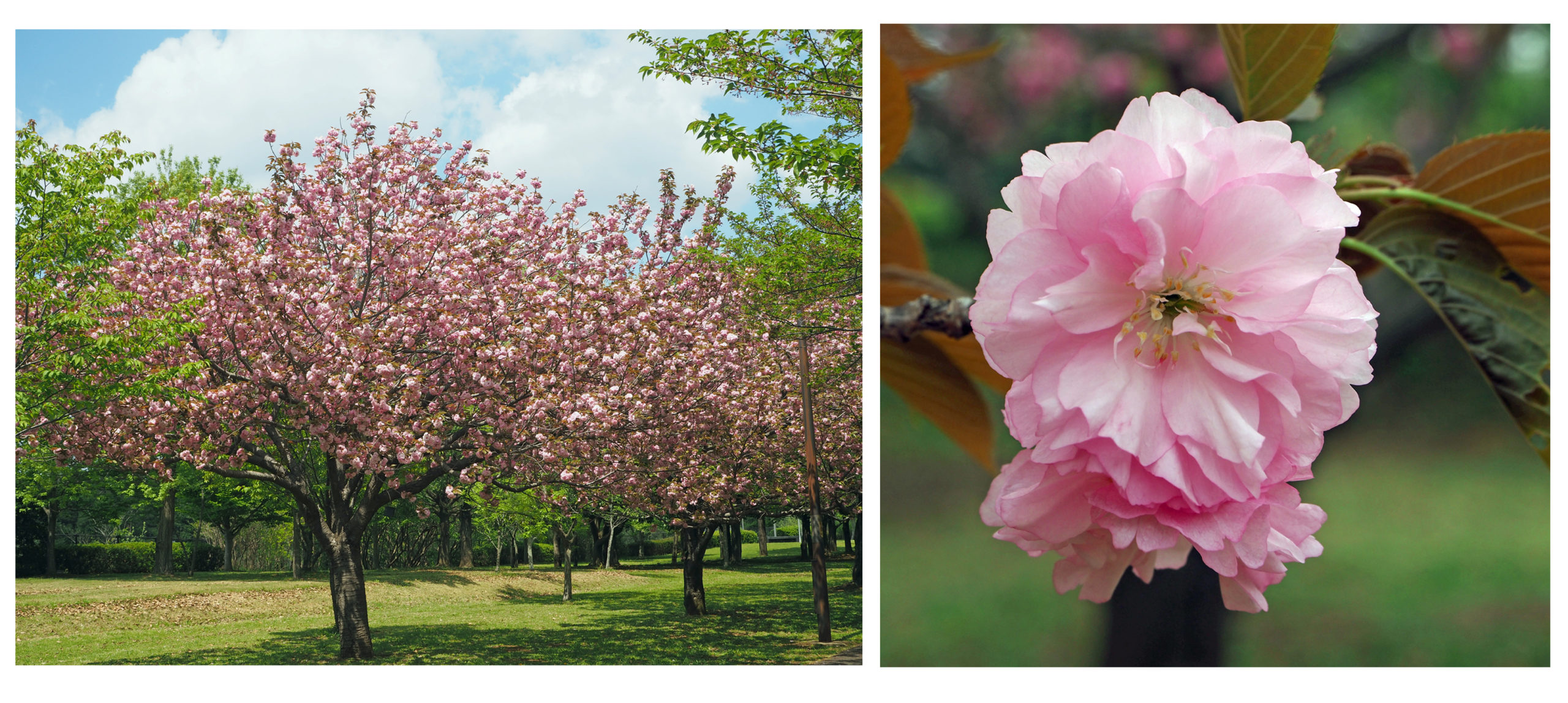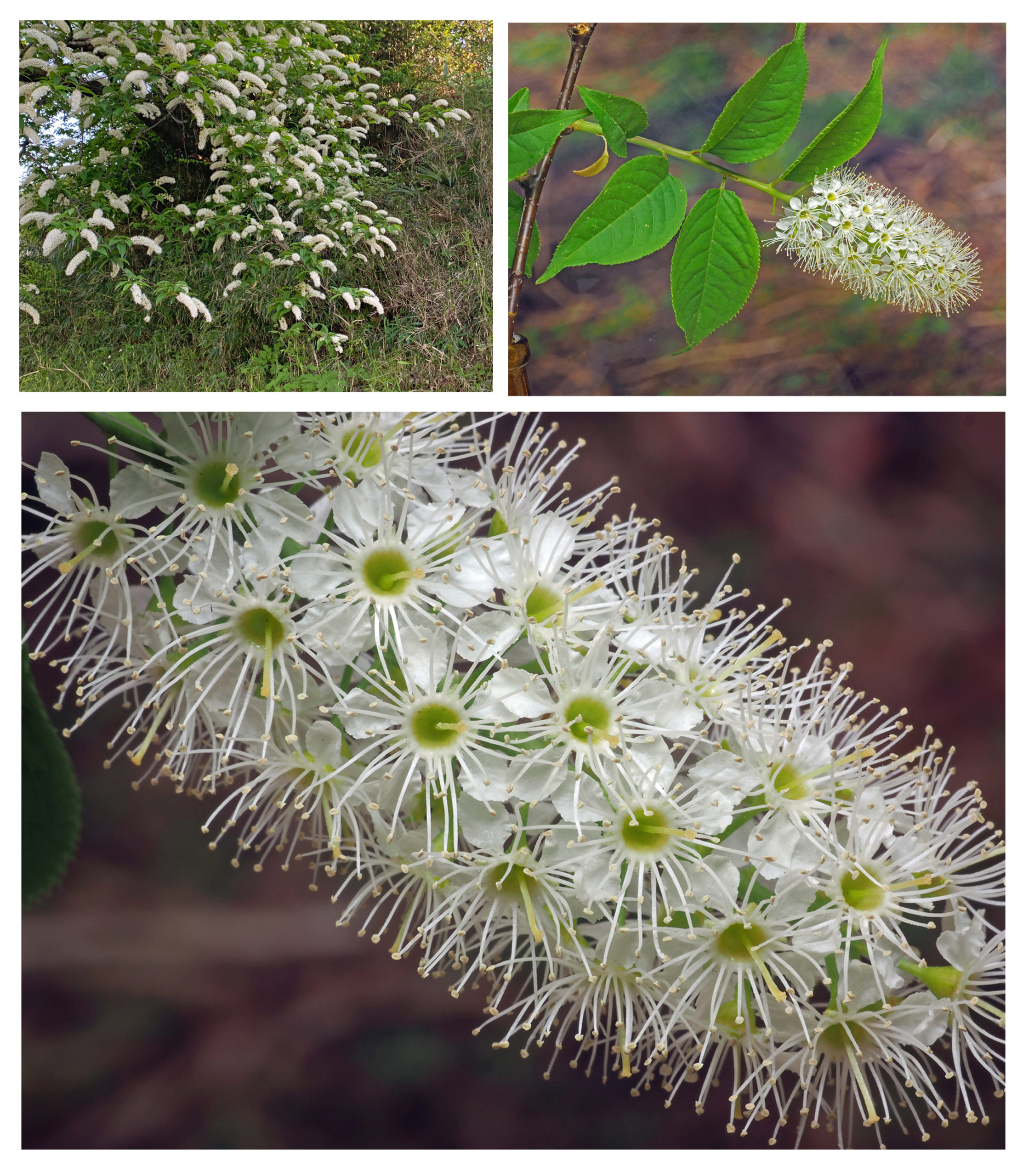These past few days have been warm with strong westerlies, seasonal trade winds that carry fine-particled yellow sand all the way from the Taklamakan and Gobi Deserts to Japan. At this time of year TV weather reports include satellite images showing the disribution of the yellow-sand clouds.
Amazingly, people around here are still enjoying cherry trees. The last cherries to come into bloom are the multi-petalled ornamental varieties generically called yae-zakura. Trees in the Rose Family usually sport dozens of stamens, which makes them ideally suited to developing double petalled varieites. Mutations occur when one or two stamens accidentally change to petals. The flower and horticulture-loving Japanese have over the centries developed dozens of beautiful varieties.
 Out for a short country walk I find a native wild cherry tree blooming in the slope woodlands. The tiny white flowers are packed into a dense cluster at the tip of the new branches. The stamens of each individual flower spread out to the sides and overlap, making the inflorescence look like a sort of prickly test tube brush. This is the Japanese bird cherry (Padus grayana). Called uwamizu-zakura in Japanese, the bird cherry is common in local satoyama woodlands. The colorful fruits, which ripen in early autumn, are a favorite among berry-loving birds.
Out for a short country walk I find a native wild cherry tree blooming in the slope woodlands. The tiny white flowers are packed into a dense cluster at the tip of the new branches. The stamens of each individual flower spread out to the sides and overlap, making the inflorescence look like a sort of prickly test tube brush. This is the Japanese bird cherry (Padus grayana). Called uwamizu-zakura in Japanese, the bird cherry is common in local satoyama woodlands. The colorful fruits, which ripen in early autumn, are a favorite among berry-loving birds.

.
